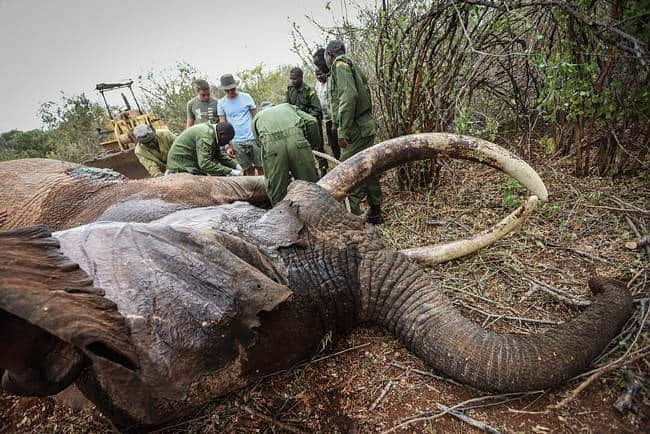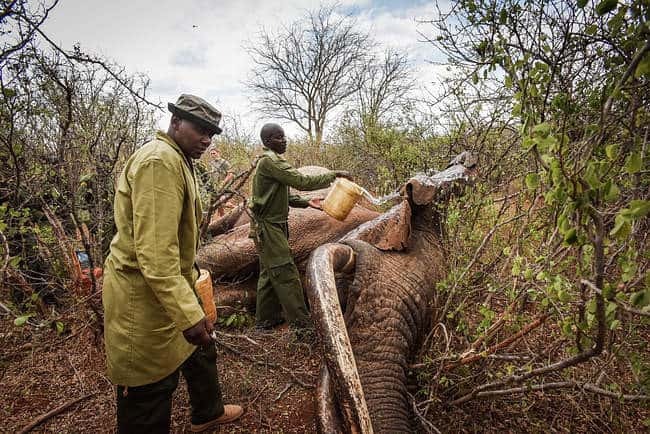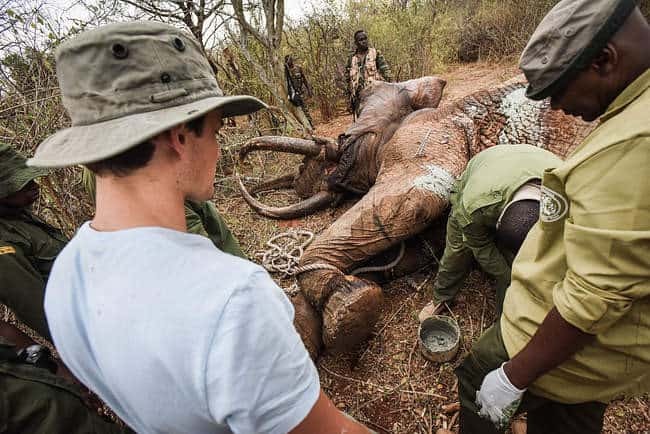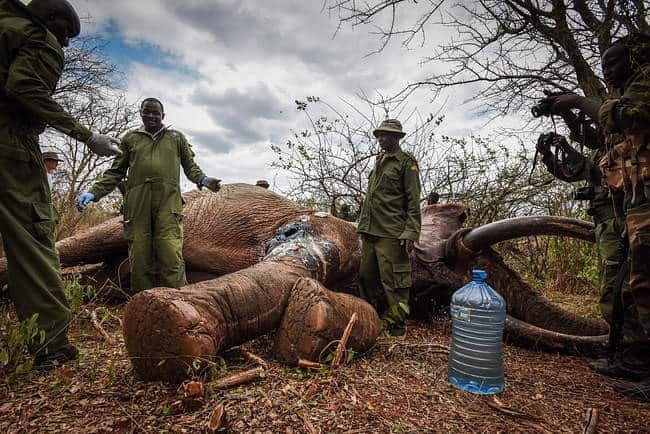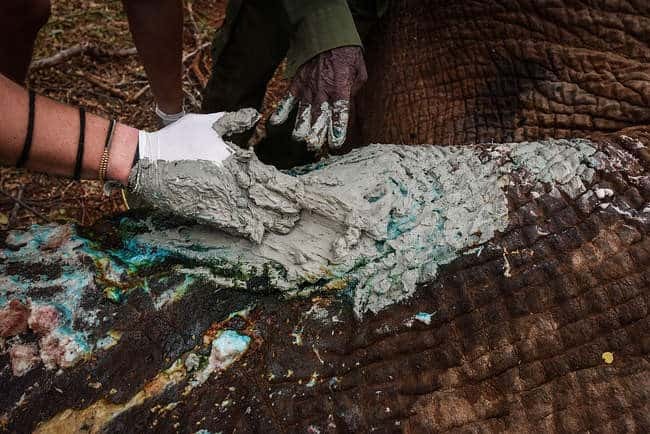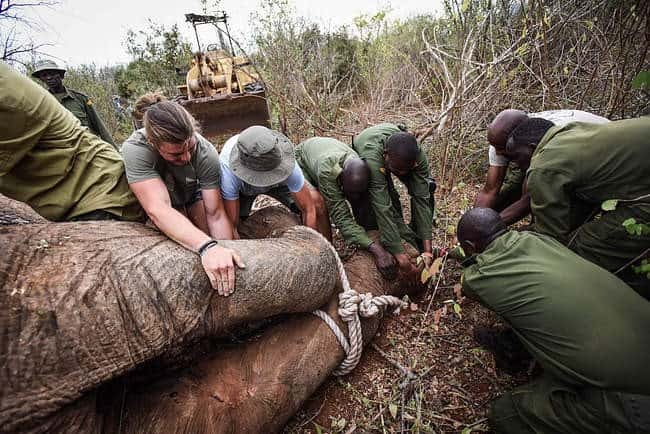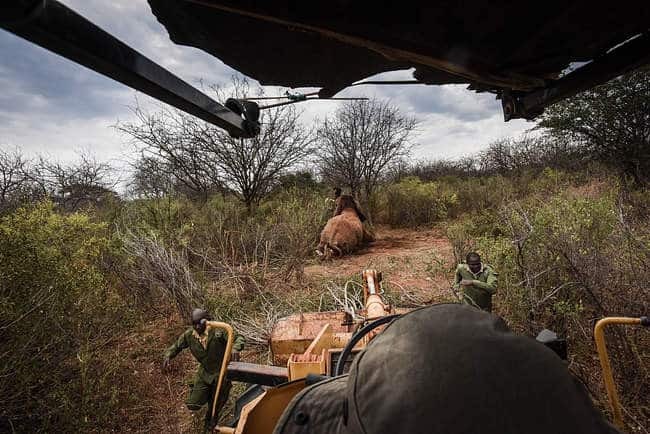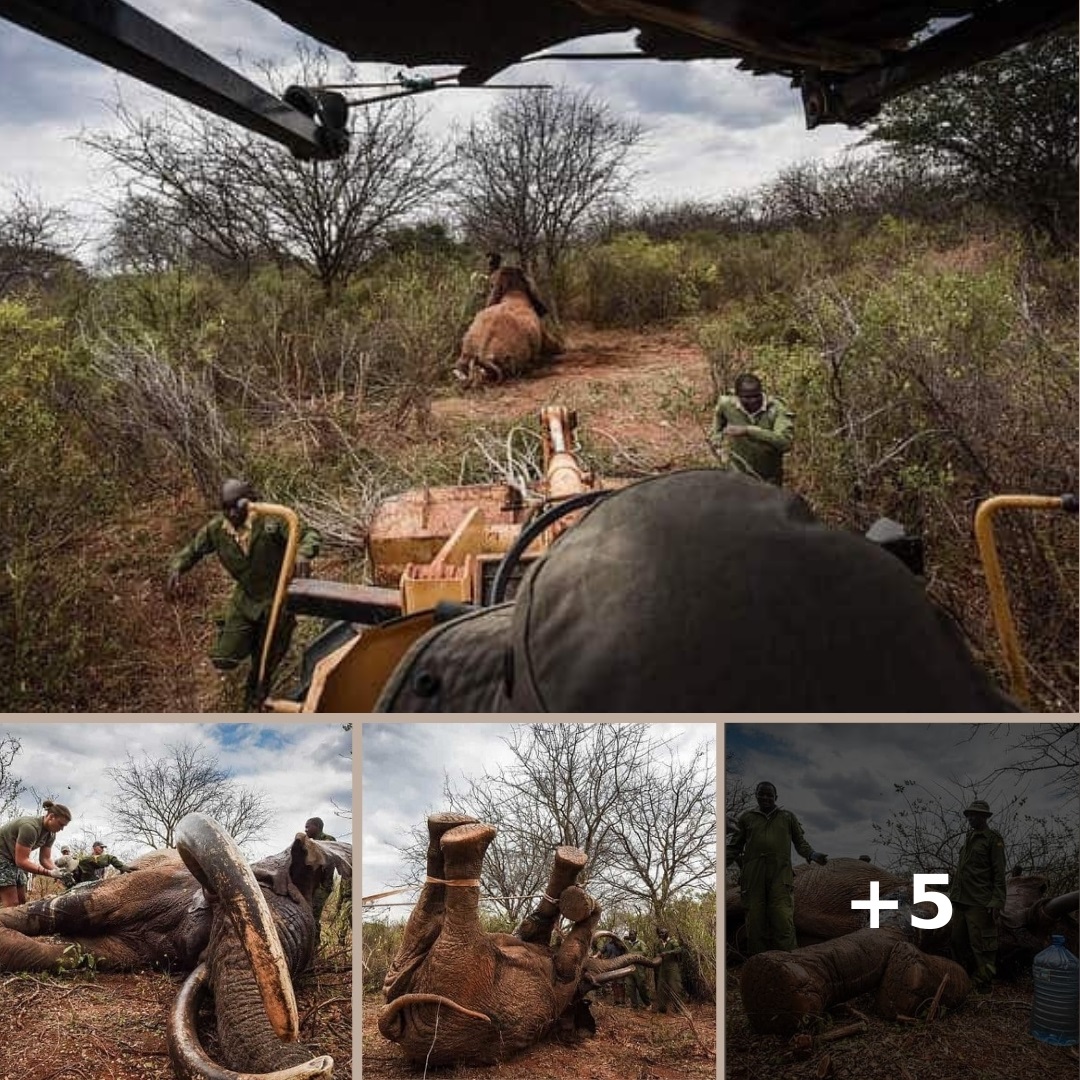In a bold rescue mission, the David Sheldrick Wildlife Trust (DSWT) and the Kenya Wildlife Service (KWS) joined hands to save a bull elephant threatened by poisoned arrows in Tsavo.
The injured elephant came to light when Taru Carr-Hartley, Daphne’s grandson, discovered it on July 22 in the Northern Area of Tsavo.
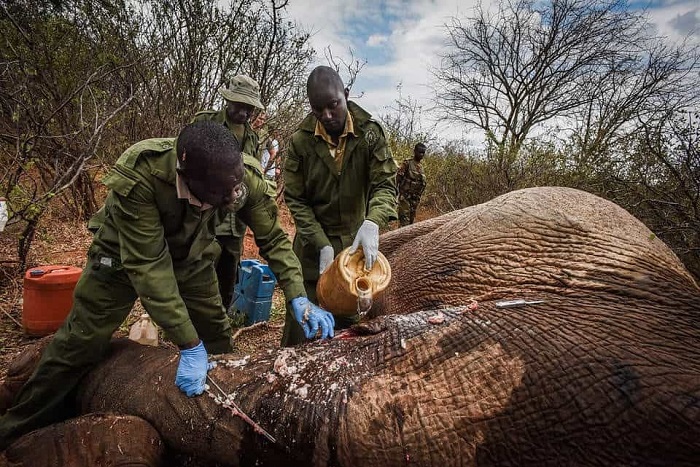
Given the challenging terrain and the situation’s urgency, DSWT pilots Taru and Neville Sheldrick took flight at first light the next day to locate and assist the injured elephant.
After an intense three-hour aerial search on July 23, the injured bull was found within a dense bush. A ground team equipped with water, veterinary supplies, ropes, pangas, and axes geared up for the challenging case.
Darting the elephant from the ground was deemed impractical due to the dense vegetation, necessitating the deployment of the DSWT helicopter.
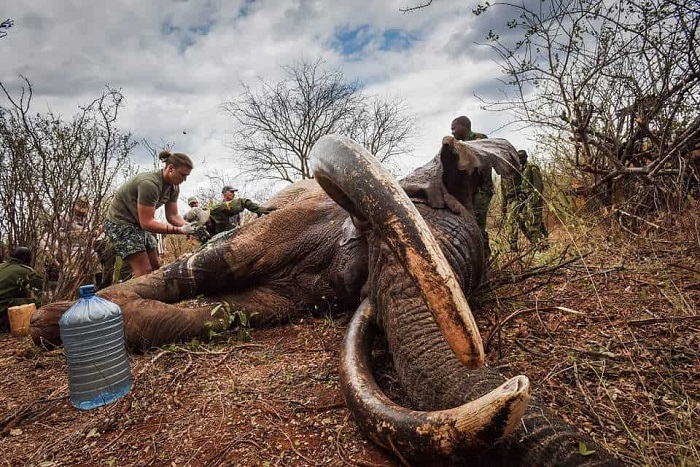
KWS Veterinary Officer Dr. Jeremiah Poghon successfully darted the bull from the hovering helicopter.
After being darted, the team patiently awaited the elephant’s descent. A DSWT pilot, monitoring from above, directed the ground team vehicles through dense vegetation to reach the tranquilized elephant.
Dr. Poghon, the first responder, was airlifted to an open clearing approximately 500 meters away from the elephant, guided by the DSWT helicopter pilot.
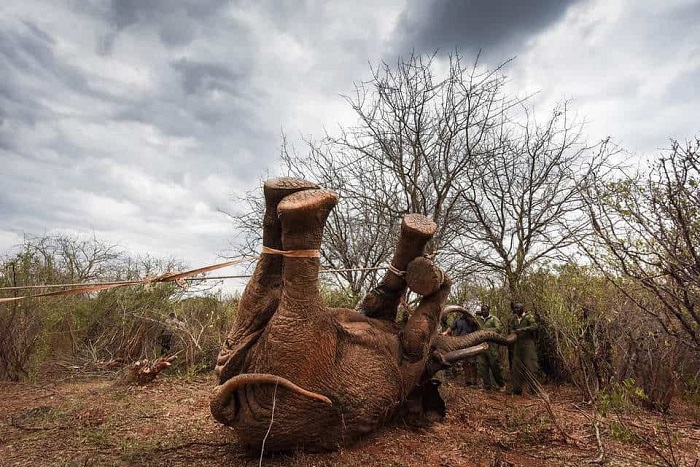
With speed and precision, the team addressed two poisoned arrow wounds located on opposite sides of the elephant’s body.
The necrotic flesh was surgically removed, and the wounds underwent thorough cleaning and treatment with antibiotics and anti-inflammatory drugs. Natural green clay was packed into the scars to support the healing process.
Due to his size, the massive bull had to be carefully rolled over onto the other side, which was achieved using ropes strapped around his legs and a grader to handle his considerable weight.
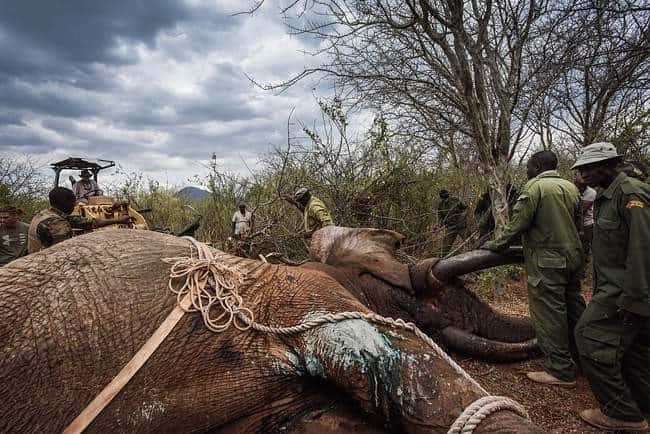
Once the procedure was completed, the anesthesia was reversed, and with a few powerful movements, the elephant successfully rose back to his feet.
Despite the disorientation and probable enduring discomfort, the injured elephant received a favorable prognosis, bringing relief to the committed rescue team.
This triumph highlights the effective collaboration between DSWT and KWS in their continual efforts to rescue and protect injured wildlife.
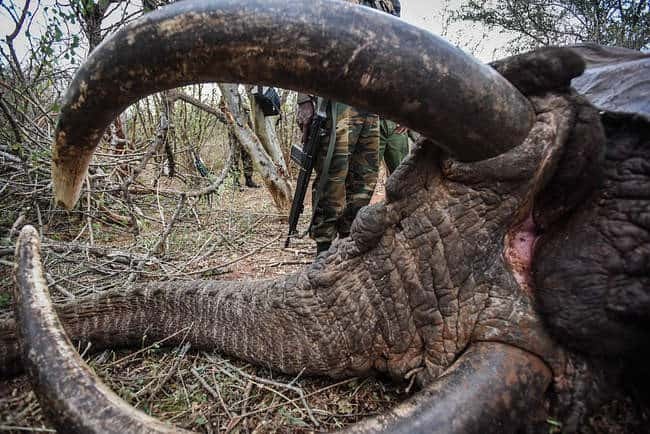
With unwavering support from DSWT donors, these organizations will persist in their mission to assist injured elephants and other wildlife species.
Over the years, the Veterinary Units and Sky Vet, funded by the DSWT in collaboration with KWS, have provided care to 2,362 elephants, underscoring the significant impact of their cooperation in wildlife conservation.
The collective efforts of the teams involved in these rescues exemplify their unwavering dedication to saving lives and preventing tragic fatalities among Kenya’s wildlife.
